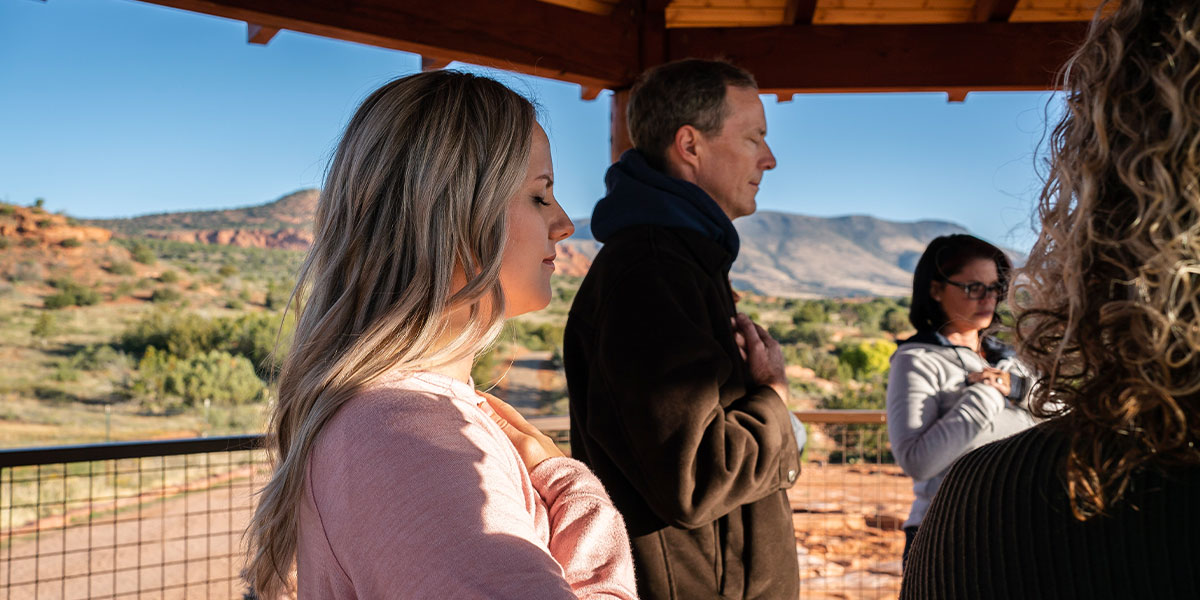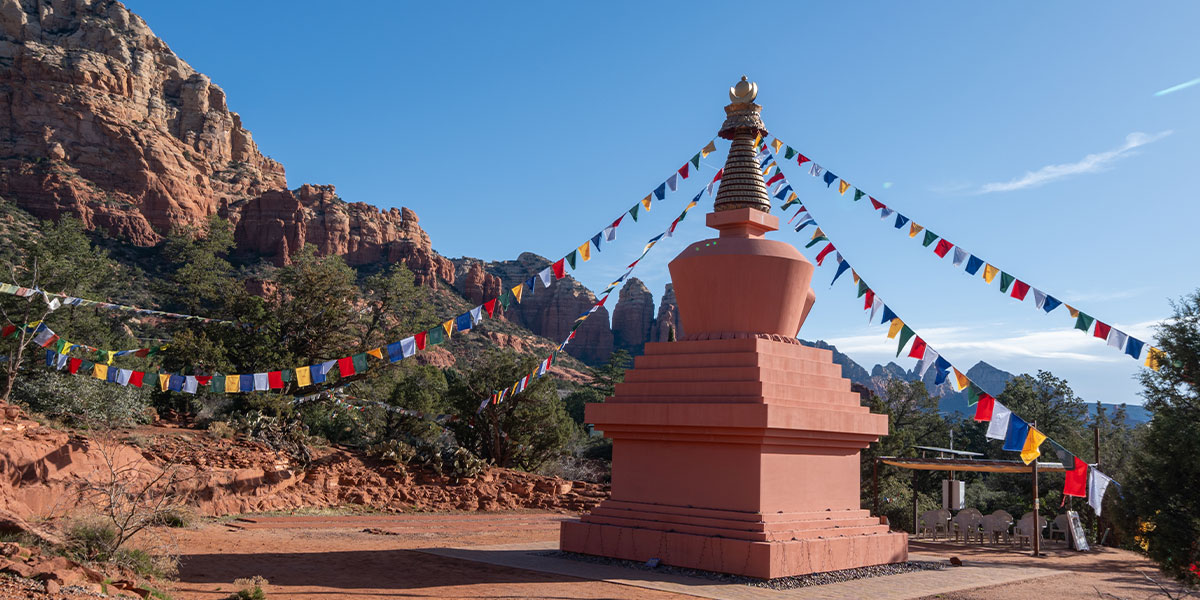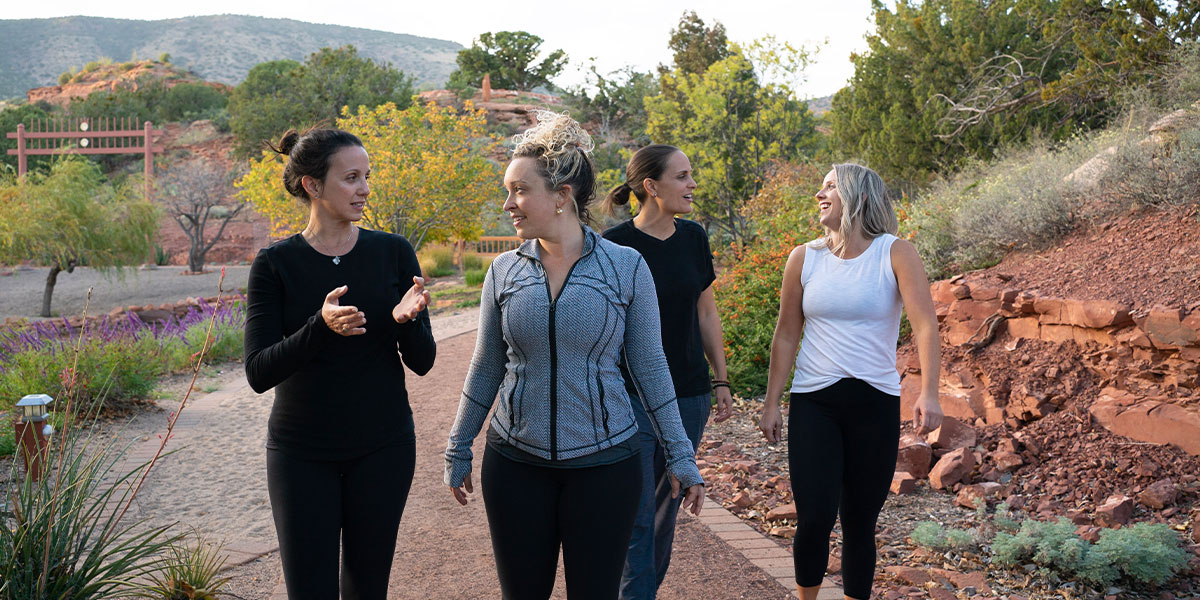4 Meditation Misconceptions (and How to Meditate Properly)
Consider the word “meditation”. What image comes to your mind?
Do you imagine a monk sitting cross-legged in a temple, achieving true enlightenment while surrounded by breathtakingly beautiful mountains?
That’s a lovely image, but consider these ideas:
– Meditation does not require a monastic lifestyle or any religious context
– Meditation does not require a peaceful or beautiful surrounding
– Meditation does not require a specific pose (or even stillness)
– The goal of meditation is not always “enlightenment”
This is meditation, but it’s a stereotype of meditation that western civilizations have fed through decades of pop culture and misunderstanding. Meditation isn’t confined to any particular image, person, creed or religion. It is a beautiful practice of self-discovery and alignment that promotes the well being of your mind, body, energy and emotions.
At Sedona Mago, we do several forms of meditation to help our guests. From barefoot walking to guided group reflection, even mindful eating, our guests find alignment in all facets of life without the stereotypes and tropes of religious asian meditation. They even take these meditative methods when they leave and find success practicing on their own time.
So let’s address the misconceptions that cloud meditation and replace them with a clearer, mindful understanding of what this ancient practice actually is.
1. Meditation is only for monks (and yogis).
False—Meditation is for everyone!
When the practice of meditation was first invented, it was performed by people who wanted to learn more about themselves. They sought “enlightenment” in the sense that they wanted to awaken the true nature of themselves.
But in the modern age, meditation is used for an array of alignment needs like stress relief, emotional trauma recovery and more. People achieve these goals through a specific kind of “enlightenment”—self awareness. By being mindful of their thoughts, their surroundings, their actions—being present in the moment—they become closer to themselves.
We believe that self awareness is for everyone. Men, women, elderly and even children deserve to know the feeling of completeness that meditation provides.
2. Meditation is only for specific religions.
False—Meditation has no specific lifestyle, including religion.
It’s difficult to even pinpoint when and where meditation was invented. There are records of meditation-like practices dating back to 5,000BCE in locations like Egypt, Japan and China. While it was predominantly practiced by monks and priests for spiritual enlightenment, our modern understanding of meditation has evolved significantly.
At Sedona Mago, we have visitors who hail from all parts of the world, including Christians, Catholics, Buddhists, Atheists and more—and they all feel the benefits of meditation. Meditation (and spirituality, for that matter) isn’t about religion. It’s about feeling your connectedness, your “oneness,” within yourself and with those around you. Focusing your mind doesn’t require any specific belief system.
3. Meditation is about “quieting the mind”.
Mostly false—this is a commonly misused phrase.
There’s a fairly common frustration in first-time meditators: they can’t seem to “quiet” their minds.
The goal of meditation isn’t the “emptiness” that the word “quiet” suggests. Rather, it is about alignment. Oftentimes, that alignment requires you to address your thoughts as they flow naturally into your head. That stream of thought can be busy —chaotic, even. But in the eyes of modern meditation, that is not failure. It is natural.
Picture a large mountain whose ice-covered peaks touch the sky. As clouds naturally form from weather patterns and storms, the clouds gather around the mountain’s summit, sometimes darkening the sky with thunder and rain.
Does the mountain move? No. It is still. Eventually, the clouds disperse, the mountain exactly where it was.
You are that mountain. Allow your emotions, thoughts and feelings flow naturally into your mind—negative and positive alike. Acknowledge its presence. Understand why it takes temporary space in your mind. Then, let it pass.
Without fixation, you become a more present body, mind and soul. This is the meditation we practice. And there are many ways to achieve this result.
4. Meditation requires a peaceful setting.
False—meditation can be done anywhere.
At your home. On a busy street corner. In the middle of an argument. Meditation can be done practically anywhere, any time, so long as you have the right destination in mind.
Meditation isn’t about finding peace. Remember: it’s about self-awareness. The peace you crave is within you—and with proper meditation, it can be uncovered no matter where you are.
So how do I meditate?
So far, you’ve read about many different forms of meditation: sitting in a calm room with some music, walking through an area you enjoy, eating food you enjoy with people you love; there are many settings and scenarios where meditation is possible.
Whatever course you choose, it’s important that you start with an important foundational element: breathing.
Not breathing to stay alive. Breathing with INTENTION. Breathing to bring the mind’s focus into the body and to be in the present moment, here and now.
Breathe.
Then, depending on what form of meditation you’re practicing, SEND your breath to specific parts of your body. If you’re sitting in a chair, send your breath to the soles of your feet. If you’re walking, send breath down your knees as they bend and through your toes as they connect and roll with the ground. If you’re eating, feel the energy in your mouth as you chew your food and down your throat as you intake the meal. If you’re simply sitting in an empty room, feel the energy in your palms radiating.
As you focus, you will become MINDFUL—an active, conscious participant in the moment. Not simply consuming food, but enjoying your meal. Not simply walking to travel, but connecting with the Earth as it revolves underneath you. Brushing your teeth, opening doors, working on your computer—all of these things become part of a new, conscious life when you meditate.
Even if only for a moment, meditating can improve your life that much more.
***
If you’d like guidance on meditation and how to apply it to your daily life, Sedona Mago’s Meditation Weekend is an excellent opportunity to hone your mindfulness and connect with yourself. Starting with the basics, you’ll learn about how to attune and align your body, acknowledge your flow of thought, and discover the balance within you.
Recent Posts





